If you’re reading something related to fossil fuels here on ZME Science, chances are it somehow ties into the issue of pollution or global warming. Both are really important topics of discussion, especially right now as people all over the world band together to fix the very real, very dangerous consequences our fossil-fuel-centric economies are having on the climate.
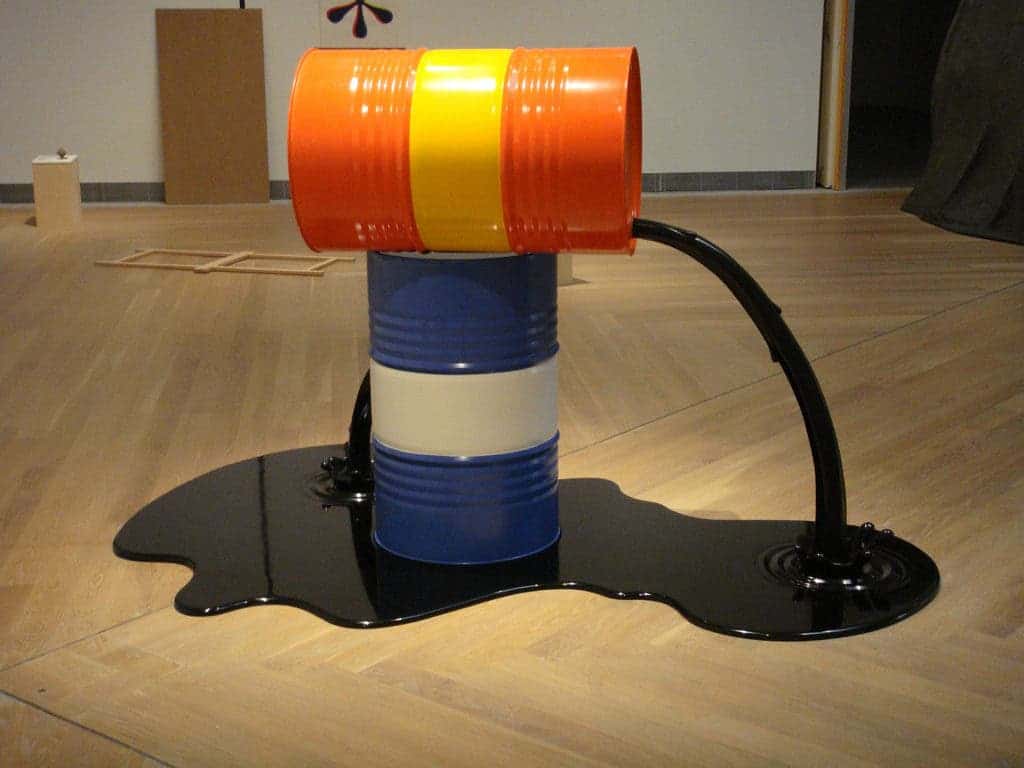
But it’s undeniable that fossil fuels allowed our societies to dramatically change in a very short span of time. Using them, people could bring much more energy to bear in shaping our environment than previously possible. Energy means tractors pull plows instead of oxen, cars instead of carriages, steel mills instead of blacksmiths, iPhones instead of carrier pigeons. More available energy makes everybody richer, better fed, and longer-living than ever before.
We’re now at a point where we can/should opt out of fossil fuels and into other, cleaner and more efficient sources of energy; but we’re not going to talk about that right now. Today we’re going to take a look at what fossil fuels are to understand why they had such an effect on society. And we’ll be starting with the one we’re probably most familiar with in our day-to-day life.
What is petroleum
Petroleum (from the old Greek petra, meaning stone and oleum meaning oil), also known as crude oil, is a fluid mix of liquid and gaseous hydrocarbons, inorganic chemical elements, and physical impurities. It usually comes laced with a hearty serving of bacteria to boot. While romantic images or old-timey movies about daring derrickmen show all crude oil to be pitch-black, it’s not uncommon to see dark brown oil or for it to take yellow, red, even green hues based on its chemical composition.

Image credits Drake Well Museum.
Oil composition actually varies so widely that one of the most used crude oil classification standards is by production area (e.g. Oman-Tapis oil, West Texas Intermediate oil, so on). Two other important classifications systems rely on density (light/heavy oil) or sulfur content (sweet/sour).
Crude oil is one of the most important hydrocarbons today, and it literally keeps our industries running both as an energy source and a critical raw material. It forms deep underground, and (generally) only rarely makes an appearance topside without our help. Its choice of neighborhood, chemical composition, and the fact that crude oil has a bit of a body odor issue, all come down to:
How it forms
[panel style=”panel-info” title=”The short of it:” footer=””]
-
- Deposition: a large quantity of organic matter winds up in a (geologically-speaking) confined area.
- Burial: this matter gets buried under sediment, and subsequently ‘sinks’ lower into the crust.
- Diagenesis: subjected to extreme pressure and high temperatures, this matter gets cooked into kerogen — a wax-like substance which is basically baby-crude-oil.
- Catagenesis / Cracking: if the right window of pressure and heat is maintained on the kerogen, it will be further cooked into fluid hydrocarbons (oil and gas).
- Reservoir formation: these new hydrocarbons, being fluid and less dense, are pumped up by the weight of rocks pressing down on them — until they hit a rock they can’t pass through and form a deposit.
[/panel]
Steps 1&2 — Deposition and Burial
Like all other fossil fuels, crude oil is formed from things which used to be alive a long time ago. In theory, any dead plant or animal can turn into petroleum over millions of years but it’s mostly algae, plankton, and zooplankton which formed the crude oil we use today. What those three have in common (and lends them well to oil-formation) is that they’re aquatic. Living in the ocean helps a lot with points 1. and 2.: on the one hand, marine environments are teeming with nutrients and usually support a lot of biomass. On the other hand, there’s more sediment in watery environments than on dry land (think of how much new soil the Nile deposits every time it floods).
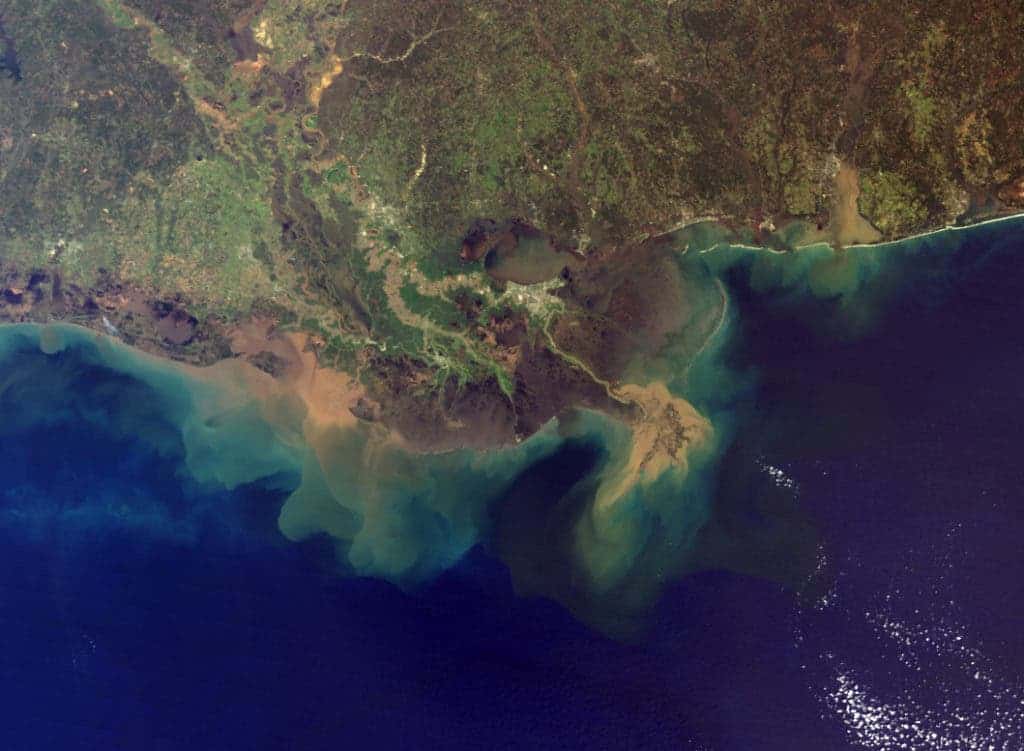
Image credits NASA Earth Observatory.
Making crude oil is kinda similar to making wine in that you need to let it sit but not breathe, or it will spoil — so both of these factors are critical for its formation. The process needs a lot of fresh (well, fresh-ish) organic matter. Since there are so many critters living in oceans, these environments can deliver the huge quantities of biomass needed (things die and sink to the bottom faster than bacteria can decompose them). Oceans can also muster the sediments required to cover biomass before it rots away in less-abundant areas. So overall, virtually all of the most important oil deposits formed on the bottom of ancient oceans and seas (which may be dry land today).
While there’s nothing explicitly prohibiting dry land environments from forming oil, the odds are stacked very highly against them. The main problem is that sediment mobility is severely limited on land compared to the ocean, so there’s nothing to insulate dead biomass from oxygen. For crude oil to form on land, you generally need a fast movement of sediments — think massive floods, landslides, mudflows, that sort of thing — or watery, muddy areas such as lakes and marshes. Plant resin can also kerogenize. However, deposits formed on dry land generally tend to form coal (from harder-to-decompose wood,) and their share in the global crude oil reserve is likely modest.
Step 3 — Diagenesis
As new sediments fall to the ocean’s floor over millions of years, their weight pushes down on our intrepid biomass deposit formed in steps 1&2. We’re talking pretty big pressures here — imagine holding a column of rock, gravel, sand a few kilometers/miles high on your shoulders, topped by an even higher column of water — which compress that matter hard enough for it to heat up. Under such conditions, the chemical bonds in the biomass start to break down and re-form into new, more heat-and-pressure-stable compounds.
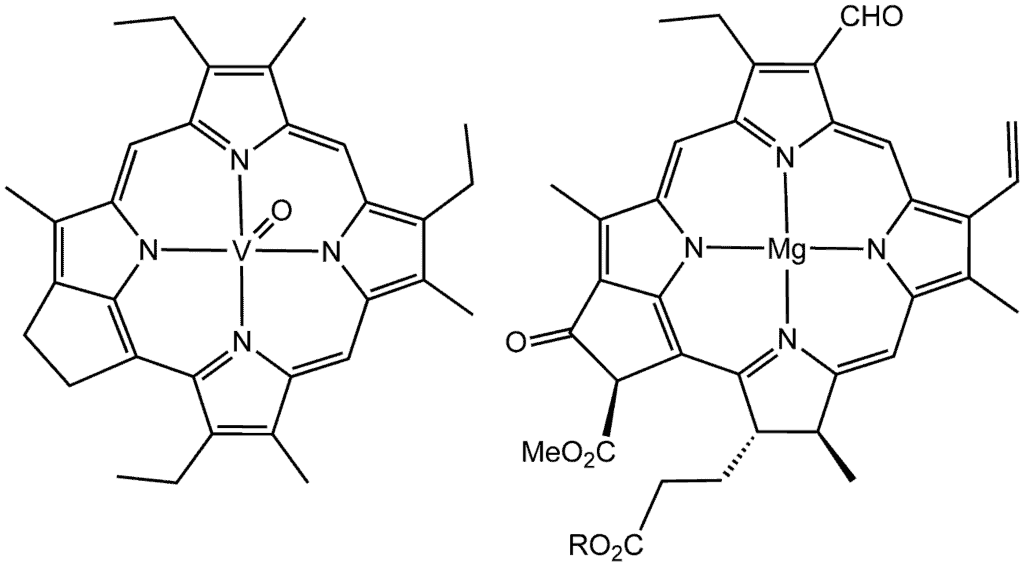
Image via Wikimedia.
Long-chain biopolymers (such as those in proteins or carbohydrates) are the first ones to break down. The resulting bits then go on to mix with sediments to form rocks rich in organic carbon or shed water and simple hydrocarbon molecules (such as methanol), and condense into new polymers. As time passes, certain elements such as hydrogen, oxygen, nitrogen, and sulphur tend to be weeded out of the mix, and the polymers tend towards aromatization (they form rings). These are denser (same material in a smaller space,) so they can better withstand the pressure. Then, the rings stack onto each other in sheets, increasing density even more.
This early stage of transformation results in a waxy substance known as kerogen, and a tar-like material known as bitumen.
Step 4 — Catagenesis / Cracking
A structure rich in kerogen and bitumen is known as a ‘source rock’ because this is where the oil will come from. As it keeps sinking lower into the crust, the kerogen in our source rock gets subjected to even more pressure, but that’s OK because it’s so dense that it can take it. However, it also gets hotter, and that’s what will finally turn it into petroleum.

Image credits Wikimedia / Glasbruch2007.
What we perceive as heat is a motion of particles — the hotter something is, the more its atoms will bounce around and into each other. Heat is, if you zoom in close enough, kinetic energy. So when you pump heat into the nicely-stacked sheets of polymers in our kerogen, you make their atoms want to move around. Eventually, if you pump enough heat into them, the structures become too energetic to remain stable and break apart into progressively smaller bits — heat “cracks” them open.
Ambiental pressure and temperature during the cracking process determine what the kerogen does: if temperatures are too low, nothing cracks. If temperatures are too high, oil gets shredded into short polymers and you get natural gas. The sweet-spot, or “oil window” for geologists, is somewhere between 50-150°C (122-302°F) depending on things like pressure and how rapidly the rock is warmed up.
Step 5 — Reservoir formation
At this point, the oil and gas are both liquid and mixed together, like an unopened can of soda. Being fluid and much less dense than the rocks around them, this hydrocarbon cocktail resulted from cracking will try to work its way upwards above to the surface.
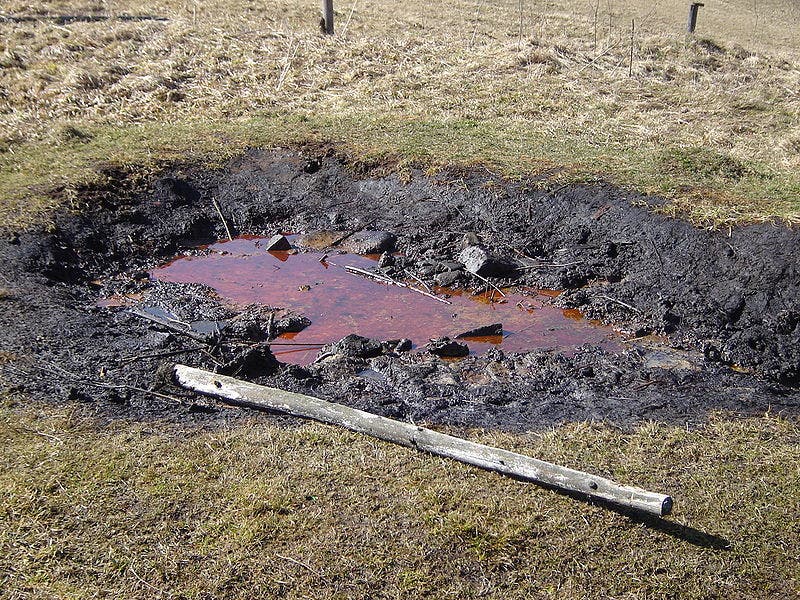
Image credits Wikimedia / Branork.
There are rocks all around it, however, so the oil can’t form lakes or rivers per say but has to travel through the pores and cracks of surrounding rocks in its merry way to the surface. Some rocks, such as sandstone or limestone, are especially porous and lend themselves well to transporting crude oil.
What usually happens, however, is that oil gets trapped under a layer of rock it can’t pass through, and will wait there until a drill head comes a-knocking.
To sum it up
So, to go from a dinosaur (more likely from a bunch of plankton) all the way to petroleum, you need a lot of time and quite a fortunate series of events: first, you need a lot of stuff to die in just the right spot and get buried under sediment in a hurry. This stack of biomass needs to get squished and baked into a source rock full of juicy bitumen and kerogen and then heated up — but not too much — to form oil. All of this needs to take place under a porous and permeable (meaning the pores are connected to each other so they can act like tiny pipelines) rock for the oil to travel through and accumulate in. And everything has to be covered with a cap rock (a seal), or some other mechanism has to be in place to prevent this oil from spilling up to the surface.
The good and bad about petroleum
So you know how plants like to hang around and photosynthesize and all that? Well, think of burning fossil fuels as reverse photosynthesis and you’re not far off from the mark. That’s what makes fossil fuels both awesome and awful at the same time, and here’s why:
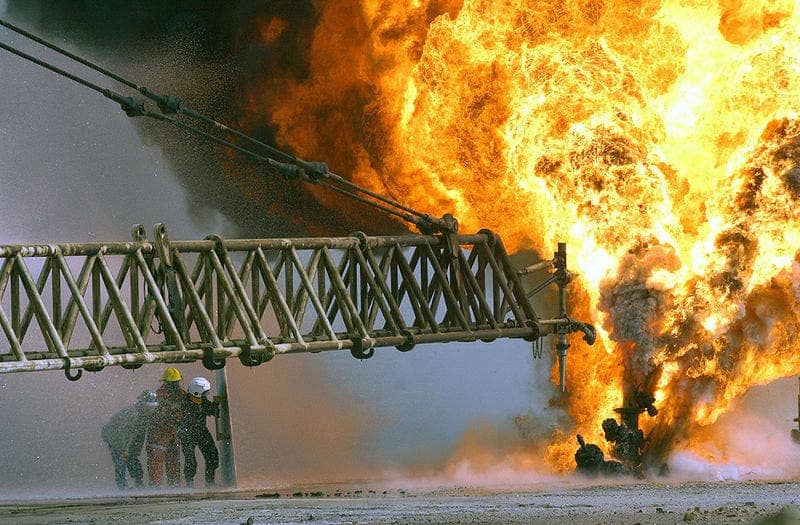
Kuwaiti firefighters fight to secure a burning oil well in the Rumaila oilfields, set ablaze by Iraqi military forces, 2003.
Image credits United States Marine Corps.
Photosynthesis requires a lot of energy: since oxygen loves binding to stuff and carbon is pretty into being bound, too, it takes a lot of oomph to pull them apart. What plants do is use solar energy to break CO2, munch on the carbon atom, and throw out the oxygen. This creates an energy imbalance since that oxygen really wants to get back with his old spark, the carbon atom — so plant matter, in effect, acts like a battery for carbon and the energy used in photosynthesis.
Any decent-sized petroleum deposit is formed from immense quantities of biomass, totaling millions possibly even trillions hours’ worth of photosynthesis, and the sum energy imbalance generated through them. When we burn oil, we re-combine carbon with oxygen and take that energy back.
The good news is that you extract the lion’s share of that initial energy (stored over the plants’ entire lifetimes) in a few moments — so fossil fuels are a very dense source of energy, an order of magnitude more powerful than what firewood or muscle can generate. The bad news is that you also release all those carbon atoms (stored over the plants’ entire lifetimes) in a few moments — so fossil fuels are a very dense source of greenhouse gasses.
Apart from use as fuel, petroleum is a cornerstone in industry. The pharmaceutical, chemical, and material industries, in particular, rely heavily on crude oil as the main source of a wide range of organic compounds. So even if we decouple our energy sector from oil, we’re sure to see it around for a long time to come.






